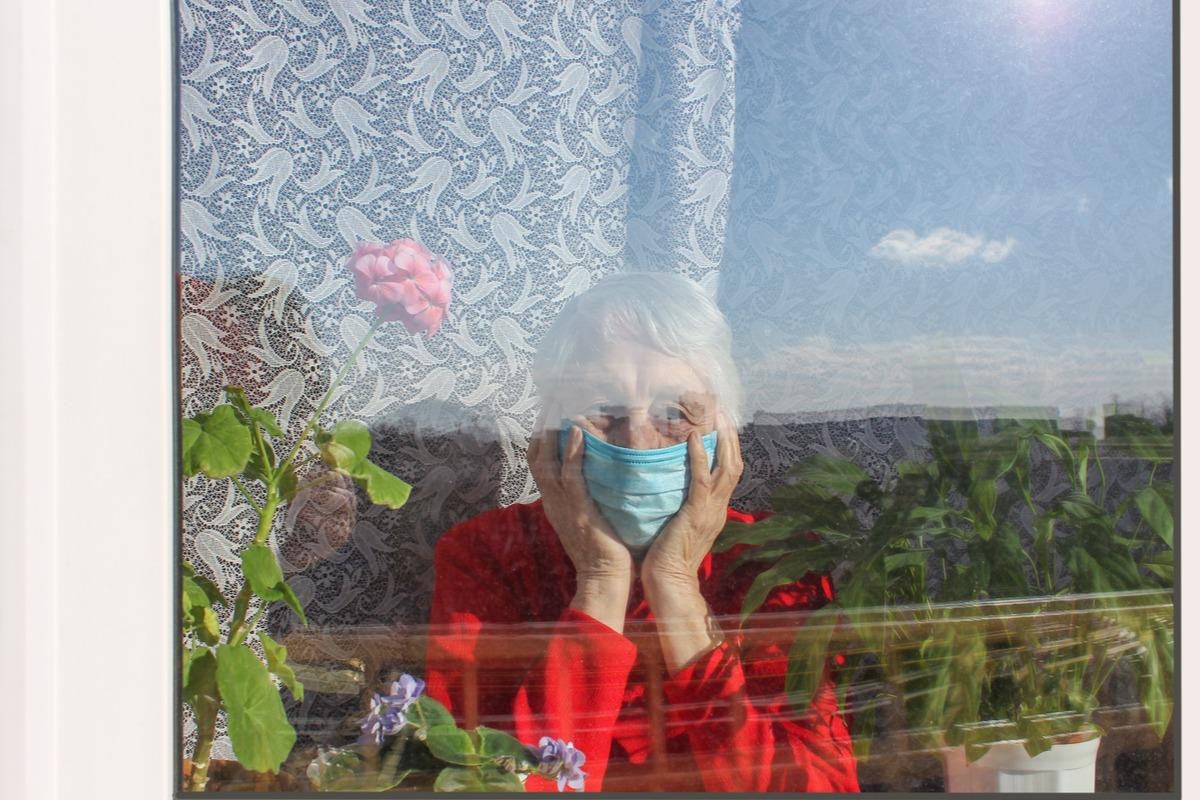In a recent study posted to the bioRxiv* preprint server, researchers evaluated the neurotropism of severe acute respiratory syndrome coronavirus 2 (SARS-CoV-2) and its impact on coronavirus disease 2019 (COVID-19) patients with and without neurological disorders like Alzheimer's.
 Study: SARS-CoV-2 invades cognitive centers of the brain and induces Alzheimer's-like neuropathology. Image Credit: Solarisys/Shutterstock
Study: SARS-CoV-2 invades cognitive centers of the brain and induces Alzheimer's-like neuropathology. Image Credit: Solarisys/Shutterstock
Background

 *Important notice: bioRxiv publishes preliminary scientific reports that are not peer-reviewed and, therefore, should not be regarded as conclusive, guide clinical practice/health-related behavior, or treated as established information.
*Important notice: bioRxiv publishes preliminary scientific reports that are not peer-reviewed and, therefore, should not be regarded as conclusive, guide clinical practice/health-related behavior, or treated as established information.
The ongoing COVID-19 pandemic has led to over 380 million confirmed SARS-CoV-2 infections globally. Apart from respiratory manifestations, SARS-CoV-2 also causes neurological abnormalities with an 85% occurrence rate in those with Alzheimer's.
Most COVID-19 patients encounter neurological symptoms such as headache, anosmia, and hypogeusia before the manifestation of respiratory symptoms. Moreover, the long-term sequelae of COVID-19 range from mild cognitive impairment to dementia.
A recent study demonstrated the presence of SARS-CoV-2 in the olfactory mucosa and its neuronal projections of a COVID-19-infected patient. Further, additional routes of SARS-CoV-2 entry have been proposed, such as via the compromised blood-brain barrier (BBB) in conditions like autism and Alzheimer’s disease, but sufficient proof of infected immune cells remains absent.
Taken together, although the major factors promoting cell entry of SARS-CoV-2 were found in neurons, sufficient information regarding the phenotypes of infected neurons and neurotropism of SARS-CoV-2 is not available yet.
About the study
In the present study, the team of researchers investigated the potential neurotropic characteristics of SARS-CoV-2 in COVID-19 patients with Alzheimer's, autism, dementia, and those without any comorbid conditions. The control group for the study consisted of non-COVID patients with the above-mentioned comorbidities.
Immunohistology staining and immunohistology dual labeling (DAB) of SARS-CoV-2 spike (S) protein in brain tissues of age-matched study and control groups was conducted to determine the presence of SARS-CoV-2 in the brain regions. Further, the development of Alzheimer’s-like phenotype and exacerbation of Alzheimer’s phenotypes in SARS-CoV-2 were determined using β-amyloid (Aβ) and phospho-tau (pTau) immunohistochemistry and immunofluorescence analysis with thioflavin staining of Aβ of the brain tissue samples. SARS-CoV-2 genomic ribonucleic acid (RNA) in the samples were analyzed using RNAscope in situ hybridization.
Results
The results indicated that SARS-CoV-2 invaded the inferior frontal cortexes of five COVID-19 patients: one subject with frontotemporal dementia (FTD), one with Alzheimer’s, two with autism, and one healthy subject without any comorbid conditions by infecting neurons and several other cells in the brain cortex.
The cortexes of the two young COVID-19 patients with autism demonstrated the presence of p-Tau tangles. The manifestations such as cellular Aβ accumulation and plaque formation, neuroinflammation, tauopathy, senescence, ferroptosis, necroptosis, and apoptosis in COVID-19 patients indicated that SARS-CoV-2 enhances or induces neuropathology similar to Alzheimer's disease.
SARS-CoV-2-infected mature neurons were derived from inducible pluripotent stem cells (iPSC) of age-matched healthy COVID-19 patients and those with Alzheimer's through the angiotensin-converting enzyme 2 (ACE2) receptor and a facilitator named neuropilin-1 (NRP1), but SARS-CoV-2 did not infect immature neurons.
Further, SARS-CoV-2 triggered a cellular program similar to Alzheimer’s in neurons derived from iPSC of healthy COVID-19 patients and enhanced Alzheimer’s phenotypes in neurons from iPSCs of Alzheimer’s patients.
A list of 24 genes was identified from Alzheimer’s neuron-mock-infected and healthy neuron-SARS-CoV-2-infected groups, which activated the infection pathways induced by viruses and bacteria. In neurons of COVID-19-infected Alzheimer's patients, SARS-CoV-2 enhanced and reduced the expression of 25 upregulated and 34 downregulated genes, respectively, by many folds. Thus, SARS-CoV-2 escalates Alzheimer’s conditions by altered gene expression, elevated neuroinflammation, and other neurological processes in Alzheimer’s patients’ neurons.
Moreover, the silencing of the top three downregulated genes in human primary neurons, named CryAA2, PSG6, and GJA8, by SARS-CoV-2 resulted in the conversion of healthy human neurons into Alzheimer’s-like neurons during COVID-19.
Conclusions
The study findings showed that SARS-CoV-2 penetrated the cognitive centers of COVID-19 patients, resulting in Alzheimer’s-like phenotypes in those without any underlying conditions, and exacerbated the Alzheimer’s neuropathology in patients with Alzheimer's and autism. Further, the SARS-CoV-2-infected neurons derived from iPSCs demonstrated the pathological features of neurological disorders, including neurotropism and induction or enhancement of Alzheimer's in COVID-19 patients and convalescents. The 24 overlapping genes identified from Alzheimer's neurons without SARS-CoV-2 and healthy neurons with SARS-CoV-2 were potential mediators of Alzheimer's infectious etiology in SARS-CoV-2 infection.
The BBB leakage is believed to be the primary central nervous system (CNS) entry route for SARS-CoV-2 in autism patients as no signs of SARS-CoV-2-infected immune cells infiltration in the autistic brains were observed in the current study. The study findings were in line with that of previous studies suggesting the manifestations of neurodegenerative characteristics in the brain of COVID-19 patients. Further investigations are required to illustrate the mechanism by which SARS-CoV-2-elicited Alzheimer’s-like phenotypes.

 *Important notice: bioRxiv publishes preliminary scientific reports that are not peer-reviewed and, therefore, should not be regarded as conclusive, guide clinical practice/health-related behavior, or treated as established information.
*Important notice: bioRxiv publishes preliminary scientific reports that are not peer-reviewed and, therefore, should not be regarded as conclusive, guide clinical practice/health-related behavior, or treated as established information.